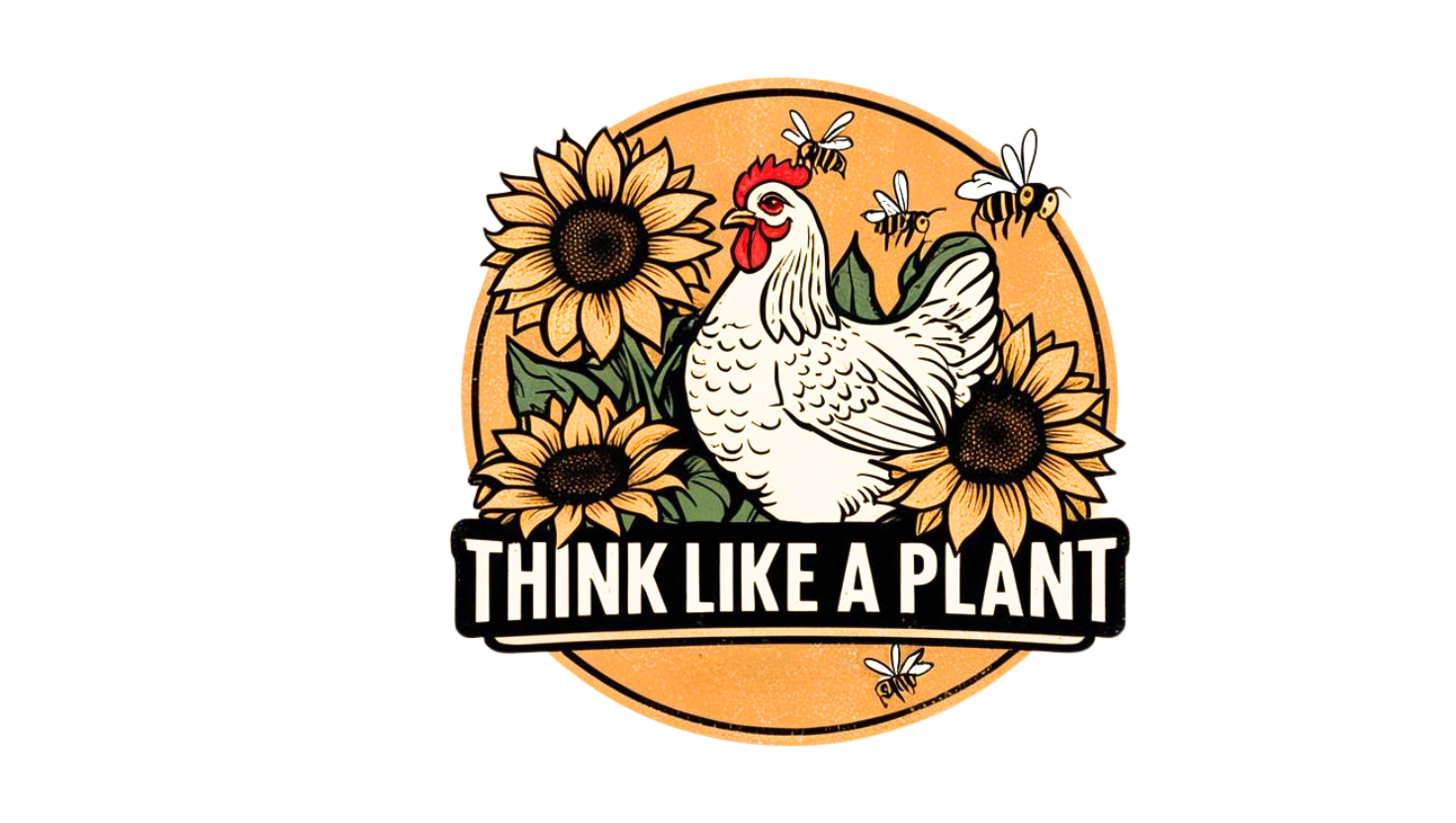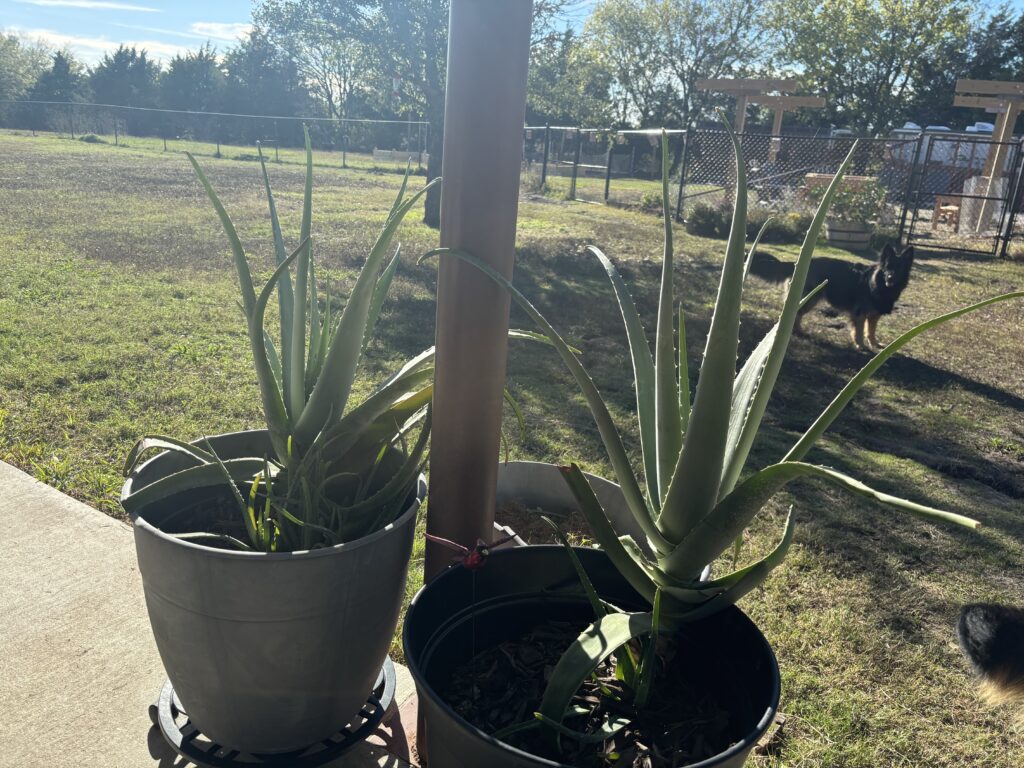Your Ultimate Guide to Caring for Your Aloe Vera Plant
Introduction
Aloe vera is more than just a trendy plant – it’s a resilient, low-maintenance succulent known for its therapeutic benefits and air-purifying qualities. If you’re looking to bring some green into your home or outside on your porch, here’s a comprehensive guide on how to care for your aloe vera plant successfully.
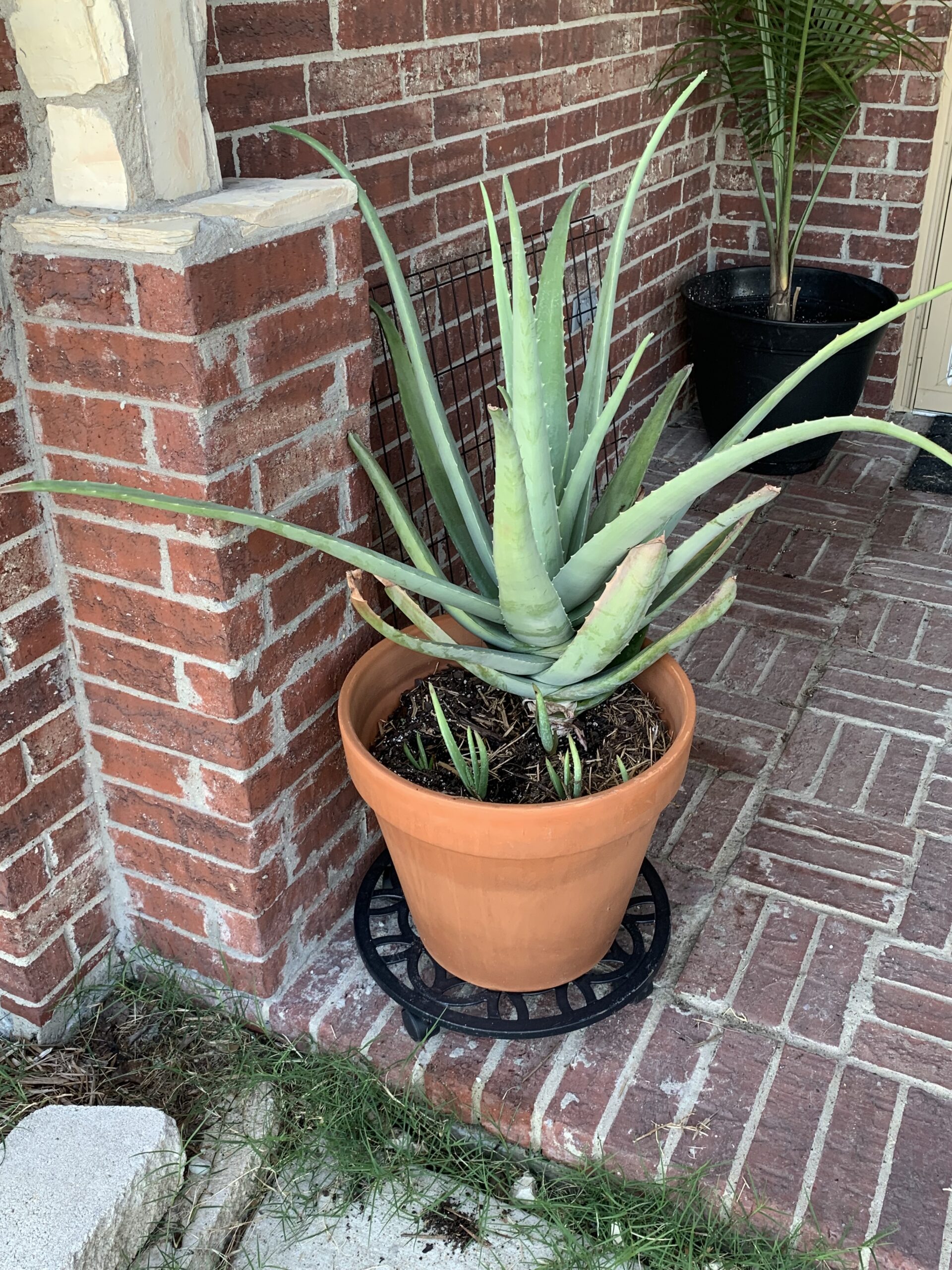
1. Choosing the Right Pot
Start with the right pot to give your aloe vera a healthy environment. Select a pot that has drainage holes, allowing excess water to escape and preventing root rot.
A terracotta pot is a great choice because it is porous and helps with evaporation. If using a plastic pot, make sure you shelter your aloe vera plant from too much rainfall, and if you are on a budget, making your own pots out of wood is an option if you don’t mind the free style drainage on your front or back porch.
Overall, use a pot that will suit your needs and not make a mess inside your home if that’s where your aloe vera is situated.
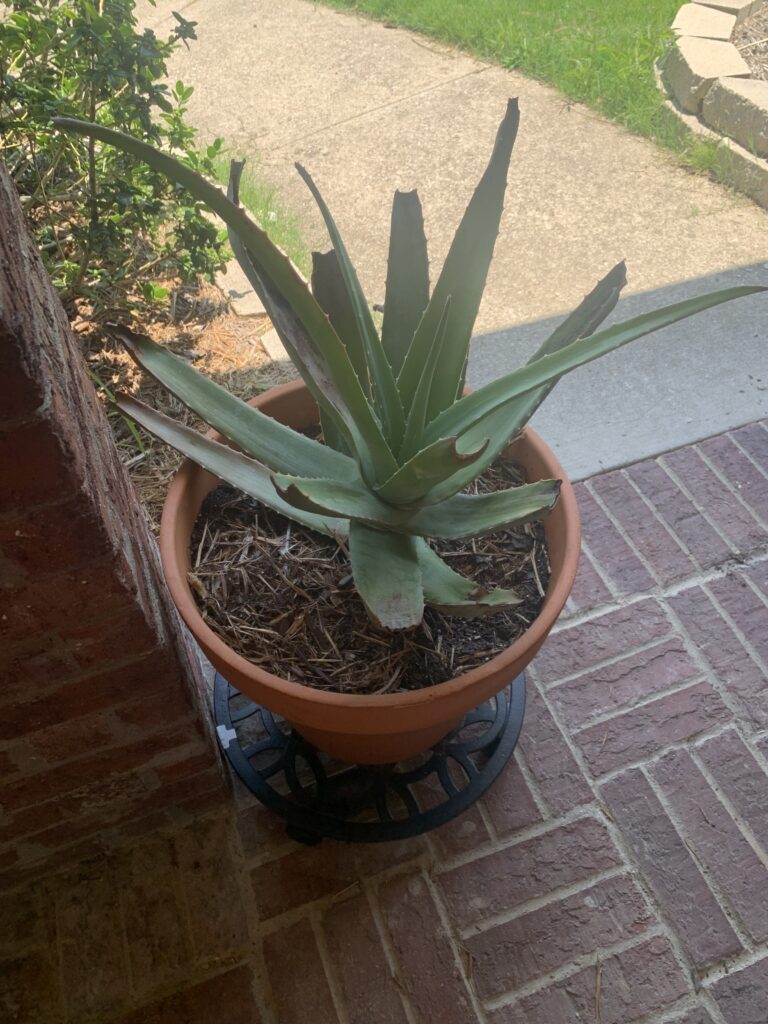
2. Ideal Soil Mix
Aloe vera thrives in well-draining soil. You can use a potting mix designed for cacti and succulents, or create your own by mixing equal parts of potting soil, sand, and perlite. This mixture will provide the necessary drainage while retaining some moisture.
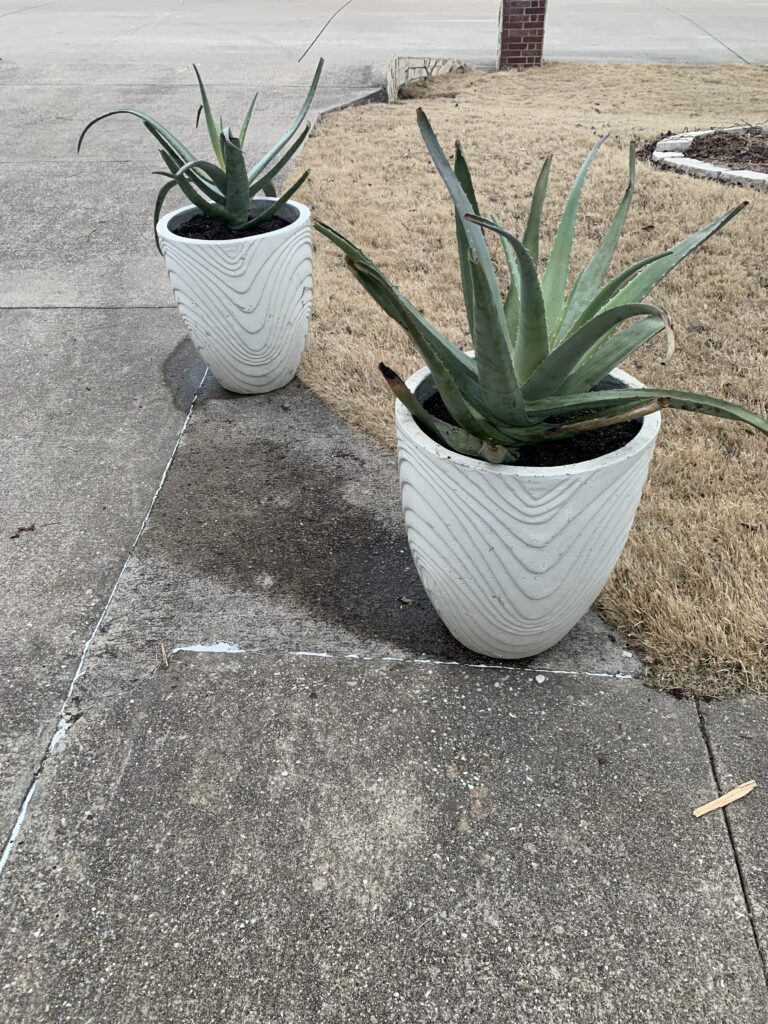
3. Light Requirements
Aloe vera loves sunlight! Place your plant in a bright, sunny spot where it can get around 6-8 hours of indirect sunlight daily. If the leaves start turning brown or yellow, the plant may be getting too much direct sunlight. Conversely, if the leaves become leggy your aloe may need more light.
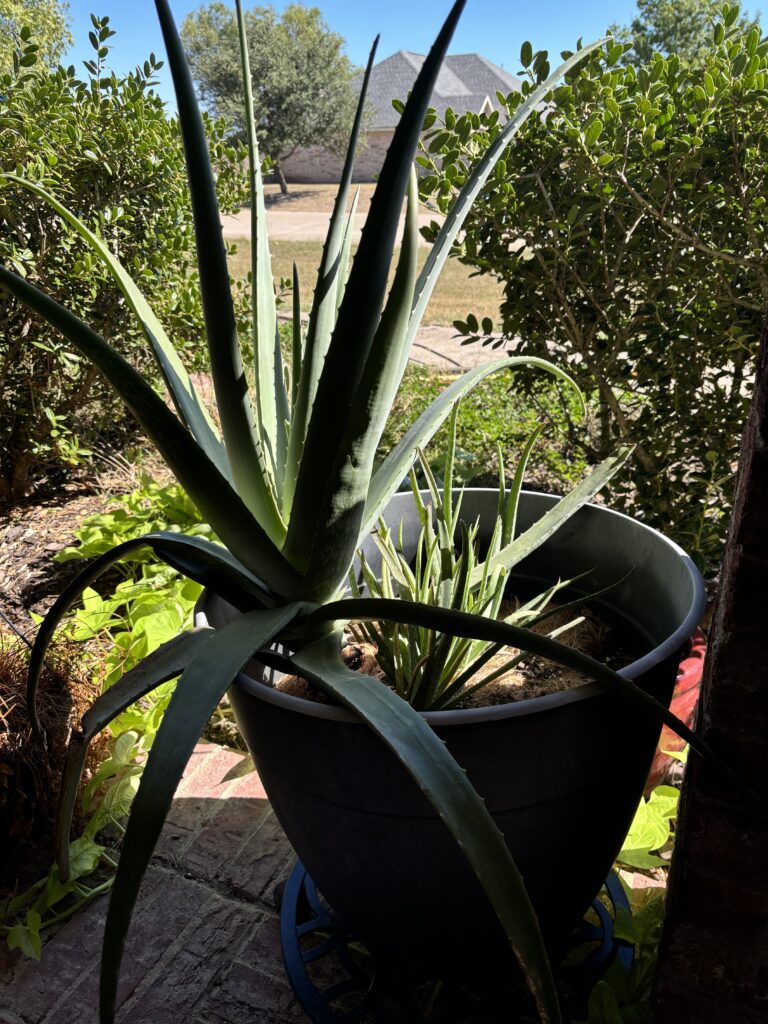
4. Watering Your Aloe Vera
One of the critical aspects of aloe vera care is watering. Overwatering is the most common mistake. I have killed a couple of my aloe veras in the past due to overwatering. Water your aloe thoroughly when the top inch of the soil feels dry to the touch. In general, this means watering every 2-3 weeks, but your schedule may vary depending on humidity and season.
During the mild winter here in zone 8b, I water my aloe veras less often. Thats usually 2-3 times during the whole season depending on how big my plant is. Once the spring season is back, my aloe veras love going back outside to soak up the sun! Always ensure that the pot drains well, and avoid letting your aloe sit in standing water.
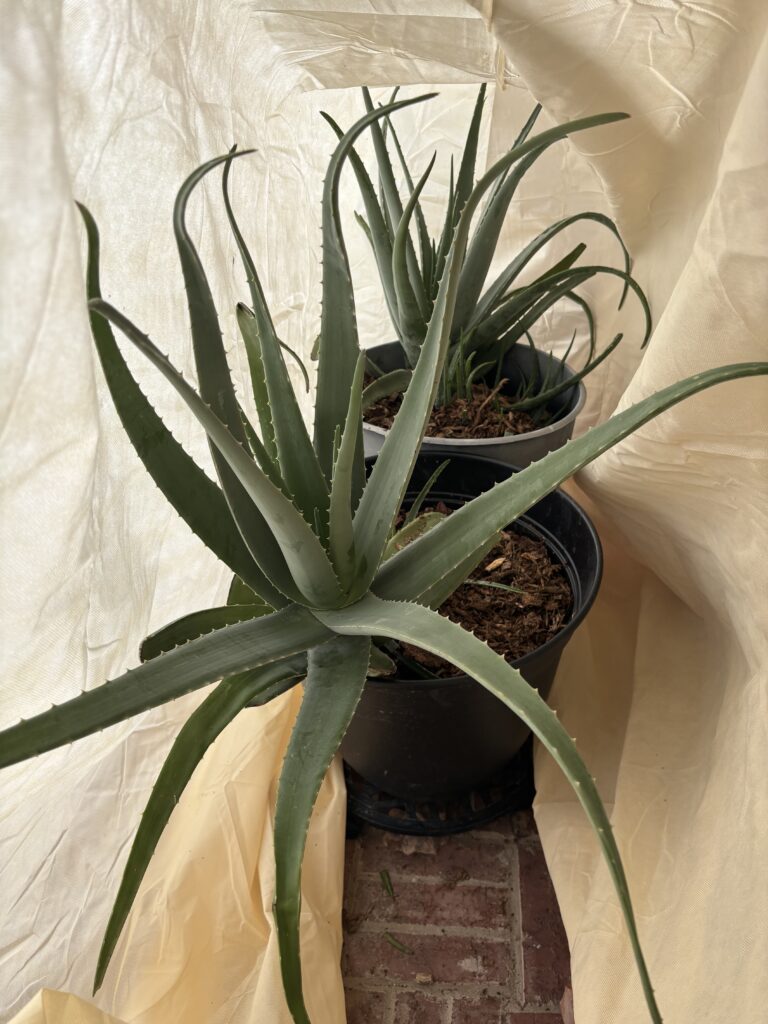
5. Temperature and Humidity
Aloe vera thrives in average household temperatures, typically between 60°F and 75°F (15°C – 24°C). While it can tolerate higher temperatures, it should be placed under a front or back porch to keep it from sun damage.
During the winter, it’s essential to protect the plant from frost and extreme cold. Garden zones 8 and above may be able to leave larger potted aloe vera plants outdoors under a thick, light filtering, frost blanket and sheltered from wind under certain circumstances. For example, my largest aloe veras stay on my front porch but next to my window and sheltered by adjacent brick walls during the winter. I tuck them together under a large thick frost blanket, add bricks to the bottom to keep the blanket down and keep an eye on them and the weather.
In the case of freezing temperatures, I stuff them into my car garage. It stays relatively warm enough in our attached car garage for them. If you feel like it is still too cold, keep your aloe vera covered with a frost blanket even inside the garage. Small aloe vera plants should be sheltered inside your home because they will struggle to survive even in the garage.
Humidity levels should be low – aloe vera is a desert plant, thriving with minimal moisture in the air. This is ideal for easy winter care when the air tends to dry out indoors and out.
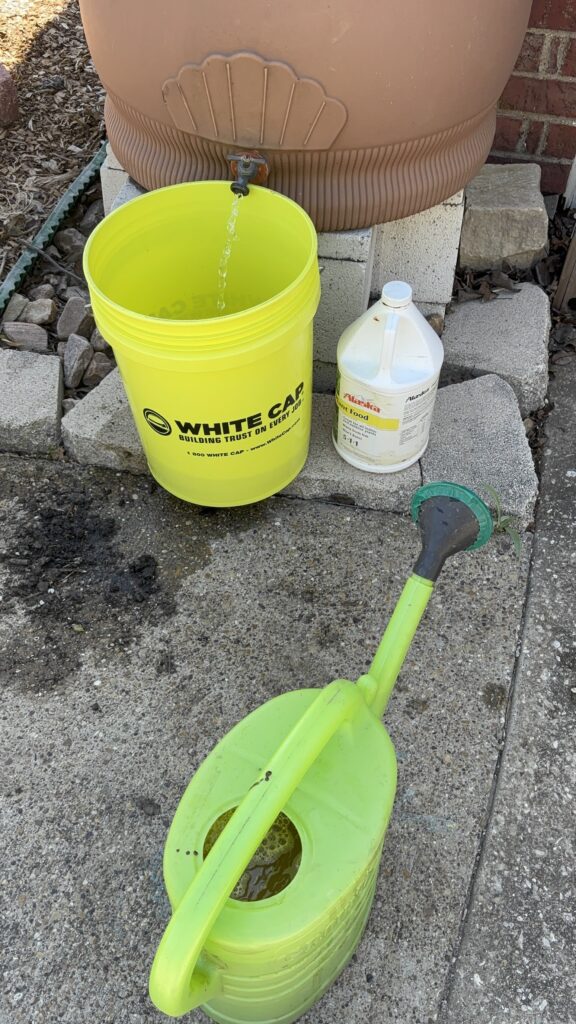
6. Fertilizing
Aloe vera doesn’t require much fertilizer. If you want to give your plant a boost, use a balanced, water-soluble fertilizer diluted to half strength about once during the growing season (spring and summer). I either add earthworm castings to avoid smells or fish emulsion if my aloe vera is staying outdoors during the growing season.
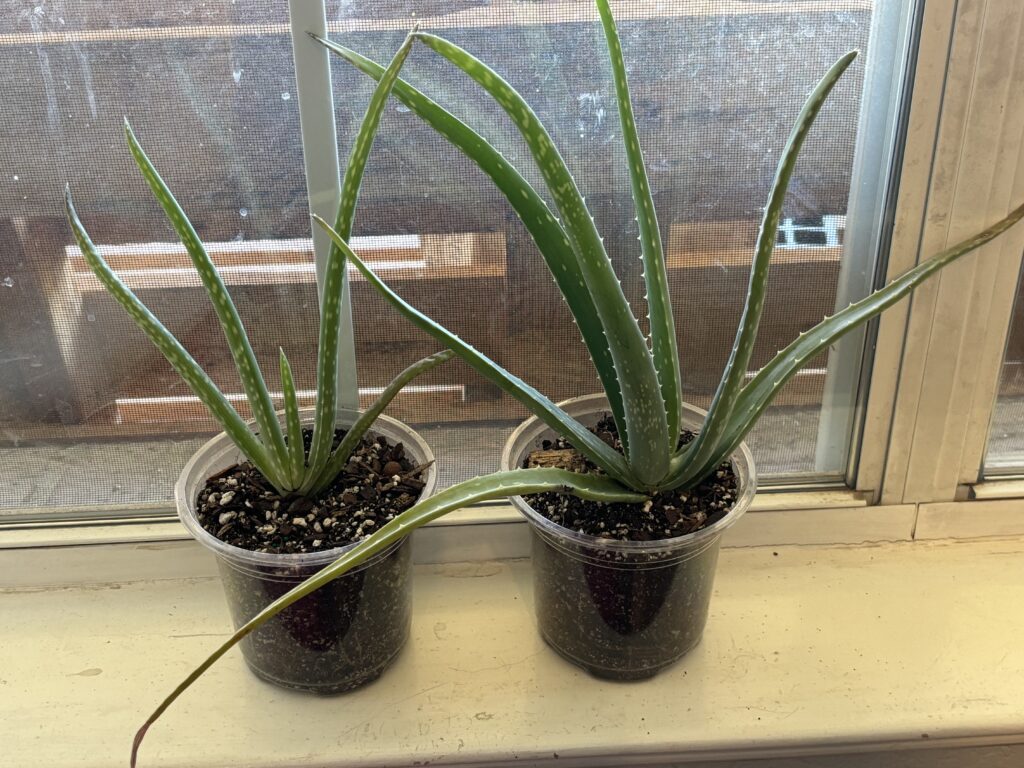
7. Pruning and Repotting
Occasional pruning helps keep your aloe healthy. Remove any dead or damaged leaves at the base to promote new growth. You can use your harvested aloe vera leaves, put them in the fridge for about a week or go through the preserving process and freeze your harvested aloe vera in ice cubes. If you just don’t have time, remember to compost them.
Repot your aloe every couple of years or when it outgrows its pot, typically during spring. Choose a pot that is only slightly larger than the previous one to prevent water retention and root rot.
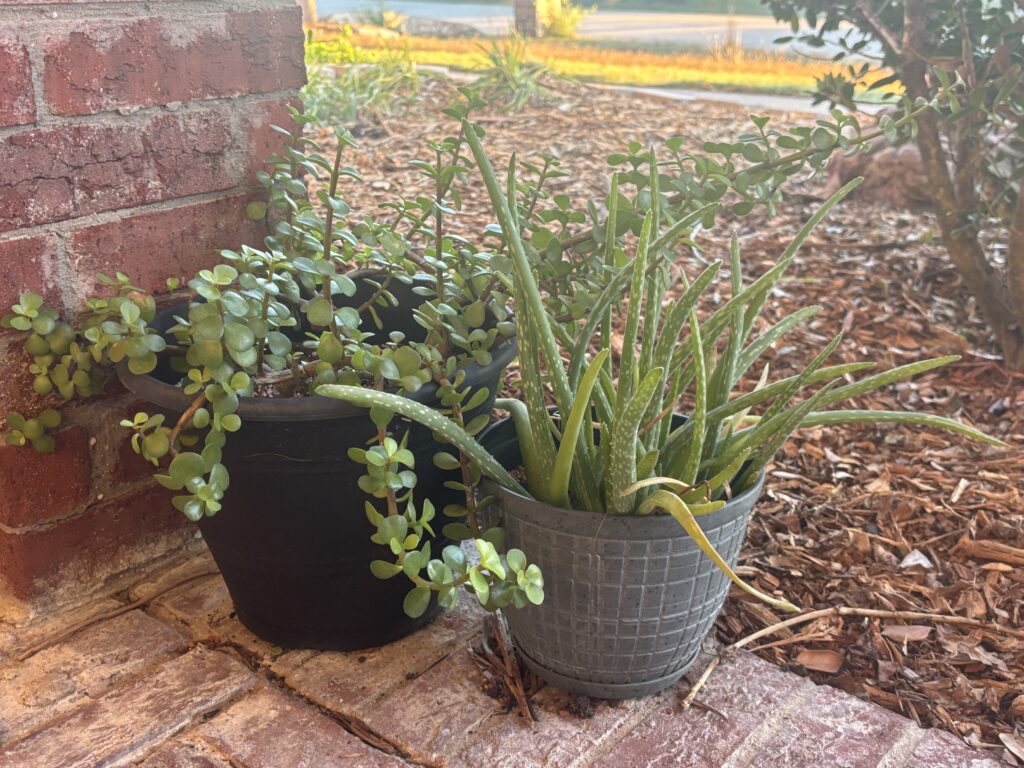
8. Pests and Problems
While Aloe vera is relatively pest-resistant, keep an eye out for common issues like mealybugs or aphids. If you notice these pests, you can wipe them away with a damp cloth or treat the plant with insecticidal soap. I haven’t had a problem with pest during my 10 years of owning aloe vera plants. My aloe killer was root rot in the beginning of my journey so be cautious of overwatering. If you suspect this is happening, try to dry out the soil by amending it with perlite, or repot it in cactus loving soil and reduce your watering frequency.
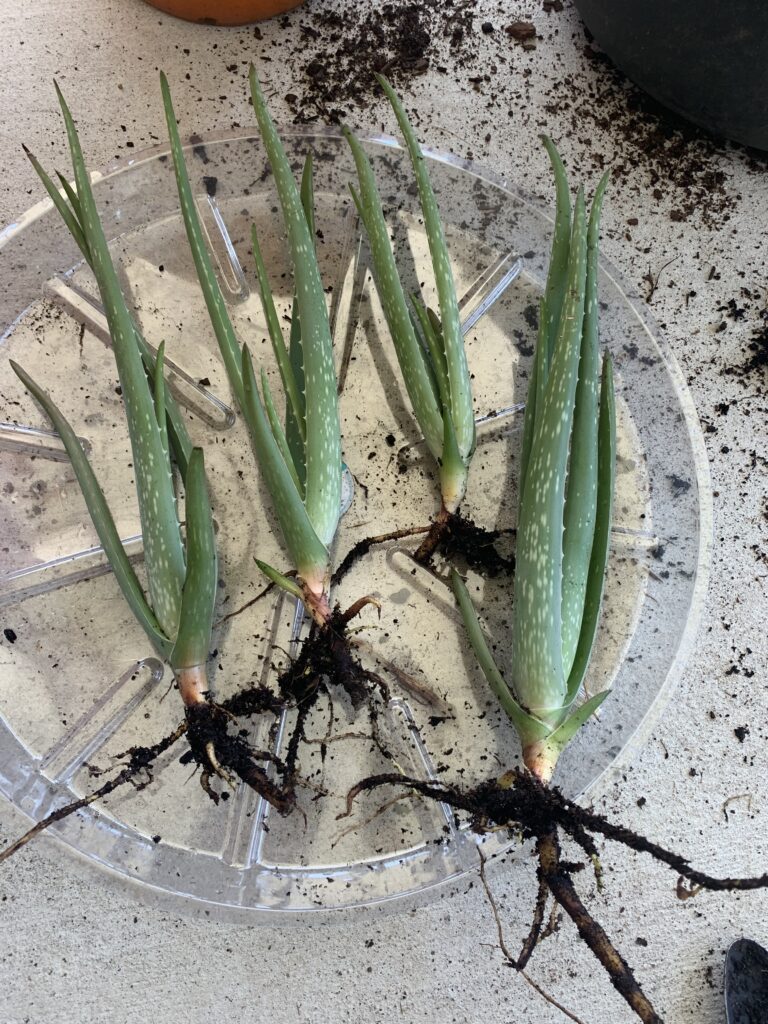
9. Propagation
Propagating aloe vera is simple and rewarding! A mature plant produces offsets or “pups” at its base, which you can carefully remove and repot. I recommend waiting to separate the pups from the mother plant until they are large enough to be separated with its own roots. When separating pups, they will turn brown from shock especially if the pups don’t have a good set of roots. Don’t be alarmed and think they are dead so you just get rid of them. No! Please, give them time and make sure not to over water pups and keep them under indirect sunlight to reduce stress. They will turn back to their healthy green color after a couple of days.
Flowering stalks on aloe vera plants are truly a treat. Your aloe vera will produce a stalk indicating that it is mature enough to produce pups. It is not always the case though in my experience or at least in my zone 8b. Some of my aloe plants produce pups before any flowering stalk appears, and the aloe that does flower doesn’t die afterward. Just make sure you remove the stalk before seed production happens. You don’t want your aloe vera’s energy focusing on seed producing when pups are the easiest way of propagating your aloe vera plants.
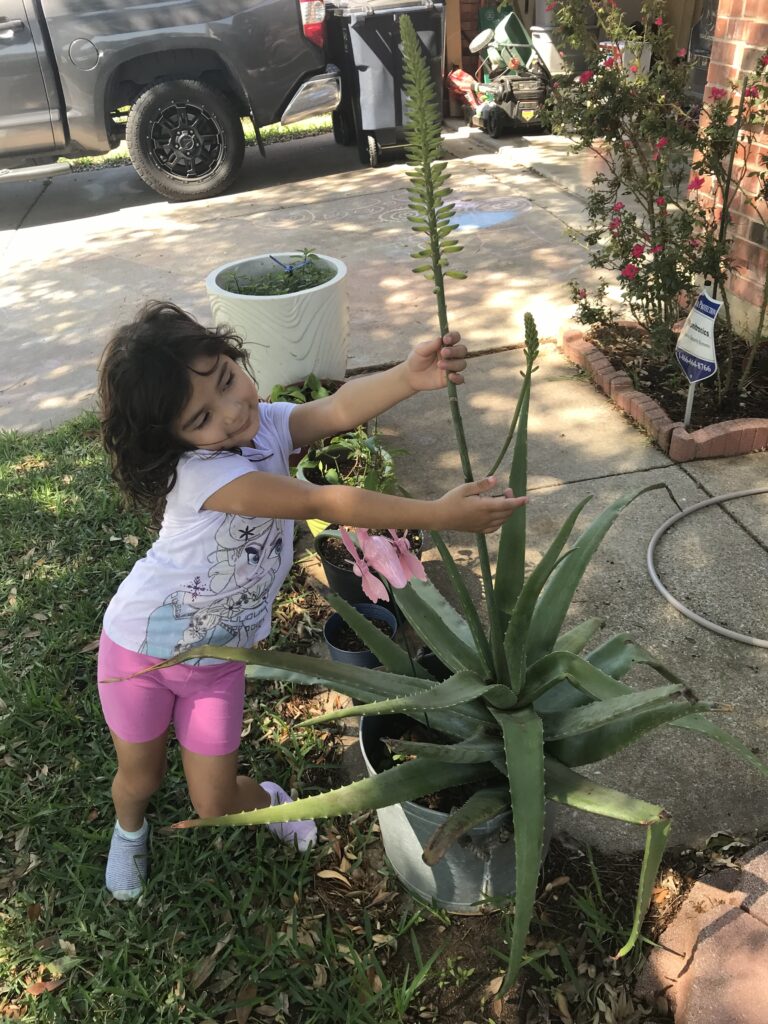
Conclusion
Caring for an Aloe vera plant is a rewarding experience that brings beauty and health benefits into your home. With minimal effort and attention, you can enjoy a lush, green companion that not only beautifies your space but also purifies the air and offers soothing properties for burns and skin irritations. So go ahead, bring home an aloe vera, and watch it thrive!
